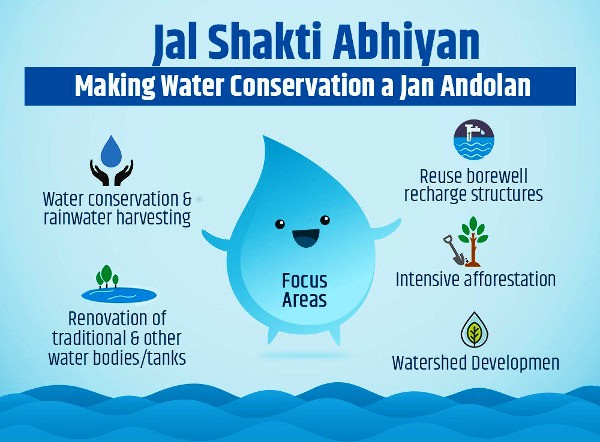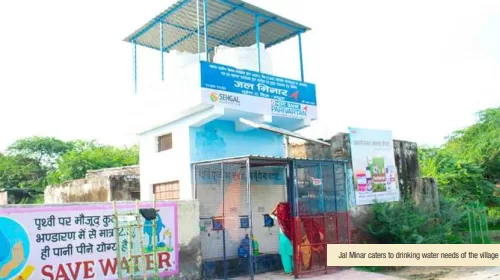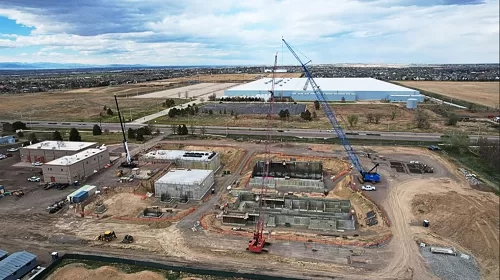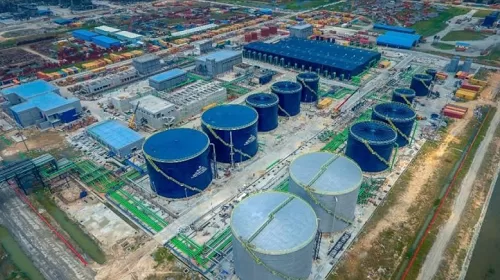The ambitious Jal Shakti Abhiyan that aims to promote the conservation of water in water-stressed blocks in the country has proved to be a success in the dry Dharmapuri district of Tamil Nadu. The district administration has spent over Rs 77.03 crores under the central government programme in improving water storage, reusing water sources and watershed development. The efforts have paid off well as per early indicators as the groundwater levels in six firkas (revenue blocks) across Dharmapuri district have improved.
Though the rivers Cauvery and Thenpennai flow through Dharmapuri, the elevated terrain of the district is not conducive for effective water storage or ground water recharge. This, coupled with the exploitation of groundwater, explains the frequent water shortages for domestic and agrarian purposes in the backward region.
The situation is slowly improving as the District Rural Development Agency (DRDA) is spearheading the Jal Shakthi Abhiyan by constructing check dams, soak pits, wells and other sources to improve rainwater harvesting in the district.
In a study conducted by the DRDA, it was found that in nine short months, ground water levels in six firkas have improved. In each of these firkas, groundwater levels have improved by 10 feet.
“Under Jal Shankthi Abhiyan Scheme the first part of the project included the identification of all existing water bodies suitable for water harvesting schemes with the help of Geographic Information System (GIS). Through this we identified the inventory of all water bodies and provided data for effective planning and monitoring. In the initial inventory we identified that Dharmapuri had 1,400 water bodies,” said Collector K. Santhi.
Following this, a scientific study was conducted on water conservation, with the help of remote sensing images from the National Remote Sensing Centre (NRSC) and GIS mapping technology. Through this, we planned Water Harvesting Structures (WHS) and made note of areas for planning future WHS.
However, apart from WHS, we also set up soak pits across rural and urban areas, dug community wells and conducted afforestation drives across the district. Further, through various NGOs and government bodies we have also been pushing on the need for water harvesting. In the nine months, between March and November of 2023, we have completed various projects which have directly improved groundwater levels in over six firkas across the district,” she said.
Balaji, a DRDA engineer, commented on the project, “In the 23 firkas across Dharmapuri water resources have been severely over-exploited or critical, meaning, there is an increase in the vulnerability of drinking water supplies due to the scarcity of water.”
In 2020, water resources were over-exploited in 15 firkas, critical in four firkas, semi-critical in two firkas and safe in only two firkas. However, in a study conducted in 2023, there has been a significant improvement on an average by 10 feet in nine months. As per arecent study, of the 23 firkas, water resources were found over-exploited only in 12 firkas, whereas those in the critical, semi-critical and safe categories were three each.
“Through the various projects, the water levels have improved in six firkas in one year. However, in the upcoming years the benefits from the project will increase manyfold in all the 23 firkas,” added Balaji.
Parasuram from Adilam village said, “Well irrigation is the only way for farmers to undertake cultivation in our village. However, over the years slowly well irrigation is also seemingly reduced and summers are usually harsh for farmers. However, last year, a cement check dam was constructed in our village and it has improved the situation. Apart from the wells now we have another source to pursue cultivation. So, this type of scheme has been helpful to us.”
Another farmer, R. Narayanasamy from Ariyakulam village, said, “The check dam set up by the administration in our village last year has directly benefited us. Our situation was such that when even borewells had been failing it was difficult to pursue farming with no other water sources. Now cultivation is slowly improving,” he said.




